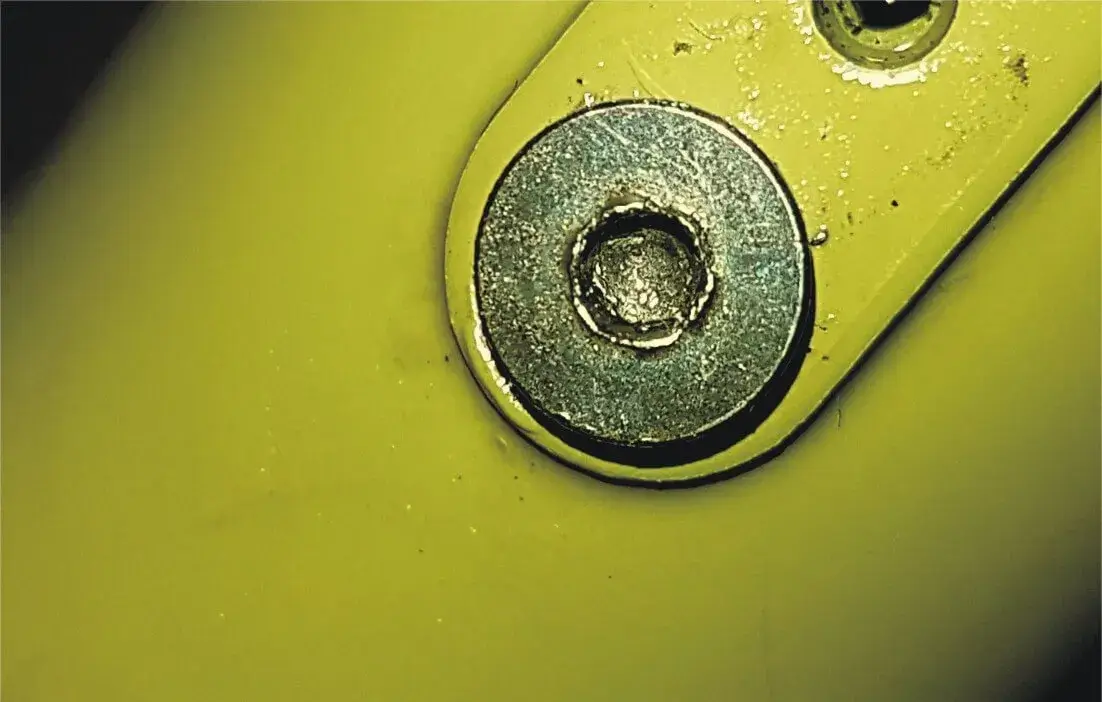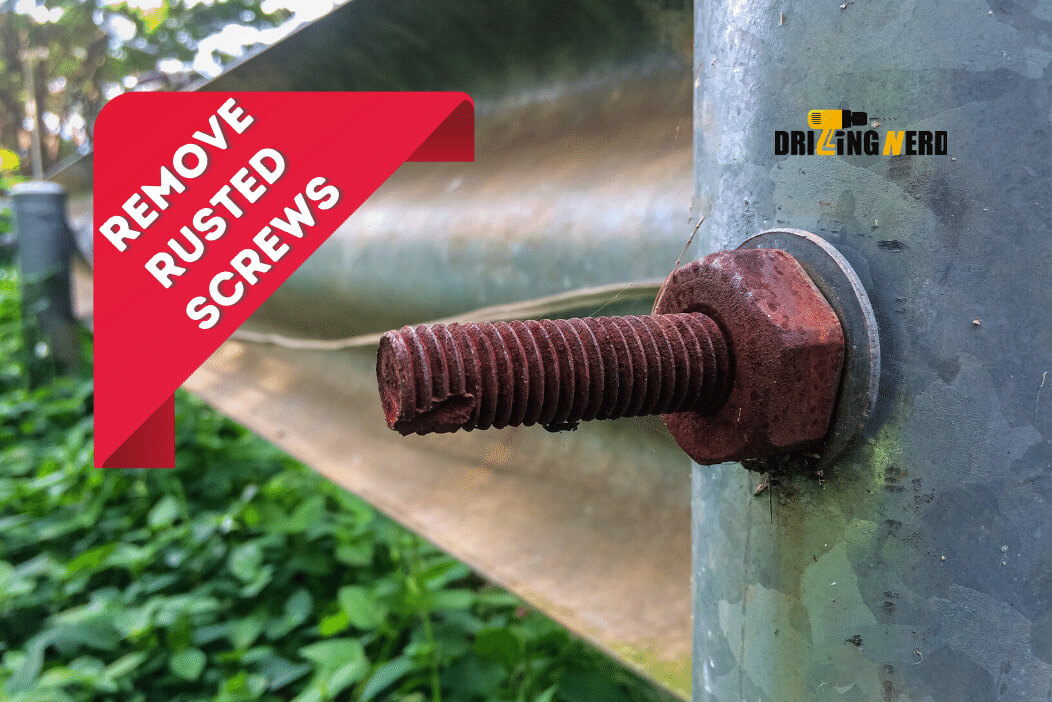We’ve all faced the irritating situation where we were removing an old part or disassembling some machinery in a smooth manner until that frozen bolt decided to show up. Bolts that are frozen and stuck in place can be a nightmare to remove. These bolts get corroded and rusty which gels them into place.
No matter what you do, these stripped bolts seem to hold their place. And many times, when people are trying to remove a stripped bolt from a machine or a spare part, they end up damaging the bolt or worse, even causing harm to the machinery or the part itself.
If you ever find yourself stuck in a similar situation, take a deep breath and don’t get frustrated. To help you extract the stripped bolt in an effective yet hassle-free manner, we have compiled a list of some of the best, tried, and tested hacks, that will make the removal easy and convenient for you.
1. Blunt Force Technique:

The first technique that one should try to get rid of a stripped bolt is the blunt force technique. As indicated by the name itself, the approach is pretty much self-explanatory. You will hit the bolt hard with a hammer or a gun. Do so in both forward as well as backward direction.
Loosening Up
The aim is to try and loosen up the corrosion that has been built up between the screw and the machine. The blunt force causing vibration will help move the rust and loosen up the screw a bit so that it can be removed easily.
This trick may not work all the time, but you will find it to be effective for cases where there is not a lot of rust and corrosion around the screw. Even if the blunt force technique, does not get the job done, rest assured that it will surely help the following methods by increasing their effectiveness.
Safety Precaution
Be careful to not damage the material or machinery itself while you are applying the blunt force to it. Make sure that the force is directly applied on the screw and the impact remains on the screw rather than the machine or the part otherwise you will end up damaging the machine rather than loosening the bolt.
2. Applying Heat:

We all know that metal is an excellent conductor of heat. Whenever a substance is heated, it expands. And when the metal cools down it contracts. The goal is to loosen the corrosion particles that are stuck between the bolt and the machine.
Expansion of Bolt
Therefore, one thing that you can do is heat up the bolt. When the bolt is heated, it will expand in size. You should heat the bolt till it turns red. Now step away and allow the bolt to cool down completely. Upon cooling, it will go back to its normal size.
This will help loosen the corrosion particles that are stuck between the bolt and the machine. And you will be able to remove the screw easily.
Safety Precaution
You will have to be careful when heating the bolt. The heat has to be applied on the bolt and not on the machinery. Therefore, make use of a smaller heat source and aim it at the bolt so you don’t end up heating the rest of the machinery.
3. Making Relief Cuts:

If applying heat or blunt force does not seem to budge the striped bolt, you can try making use of relief cuts. This is a messy method but it sure is one of the most effective ways of getting rid of a stripped bolt. The goal is to make a couple of cuts on the striped bolt.
Double Cuts
You need to make two to three cuts in the head of the bolt. The cuts will be followed by a couple of blows of the chisel or a hammer so that the tension between the nut and the machinery can be relieved. You should make use of the cuts to split the bolt.
When the bolt splits, it will relieve the built-in rust and corrosion which will further help ease the removal process.
Safety Precaution
Make sure that the cuts you make are on the head of the bolt so that the nut can be extracted safely and in a single piece. If you make the cuts a bit too deep within the nut, you risk breaking the nut which might break the nut and cause more trouble in the removal process.
4. Drill The Nut Out:

If making the relief cuts is not an option, in any case, you can follow a similar approach that works on the same principle but is not as intense as the relief cut method. As indicated by the name of the approach itself, the goal is to drill the hole out of the part that it is stuck in.
This method is highly recommended in the case where the head of the bolt has come off or has been damaged.
Using Small-Sized Drill
In order to drill the bolt out of the machinery, you will need a small-sized drill. Use the smallest drill bit that is available. Aim the drill at the head of the bolt and start drilling. This method is effective because it combines a couple of techniques in one.
When the drill is used on the nut, it will heat the bolt and cause expansion which will further help relieve the corrosion of the nut. The drill will also exert pressure and force on the nut which will help loosen the bit according to the blunt force technique.
Safety Precaution
But make sure that you use the smallest drill bit available and start with a slow speed. You can then increase the drill bit size as you see the bolt loosening up and can also build up the speed as you go.
The goal should be to be able to chisel or break apart the nut as you go. Once you are done, you will see that the nut would be barely fixed within the machinery and a simple tap should be enough to help release it.
5. Using An Air Hammer Or A Pipe Wrench:

If you are trying to remove the bolt from an open area, the use of an air hammer would also prove to be a beneficial approach. You will have to make use of the air hammer to chisel and exert force on the bolt’s head.
This will create vibration so that the rust and corrosion within the nut can be released and it becomes loose. Once the nut is loose enough, you will easily be able to screw it out or remove it by picking on it.
Using Pipe Wrench
The use of a pipe wrench is also a tried and tested way of loosening a bolt that is striped and stuck due to corrosion. And the best part of this approach is the fact that a wrench is easily available in almost all workstations therefore you will not have to go ahead and try and find something special to relieve the bolt.
Tightening Wrench
Make sure that you tighten the wrench around the nut as much as possible. This will ensure that the wrench grasps the bolt properly and the body does not slip away from the wrench.
Once the bolt is tightly stuck within the wrench, you can go ahead and start rotating the wrench to loosen the tension between the bolt and the machine in which it is stuck. This method may require some elbow grease but will surely get the job done.
6. Remove Surrounding Bolts:

This way it is not visible from the surface itself, but at times, one part of the machine is being held by several different bolts and screws. Within the machine, the bolts tend to get tangled and stuck within one another which is the cause of the stripped bolt.
Remove Surrounding Bolts
Therefore, if you find a stripped bolt in a part where there are several surrounding bolts, you should try and remove the surrounding bolts. This will help get rid of the deadlock and the bolt stuck would be released easily.
If all the bolts seem to be stuck, try and get rid of the ones that are the easiest to move and then gradually release them one at a time. This is a bit time taking and tedious, but this approach will get the job done for you.









